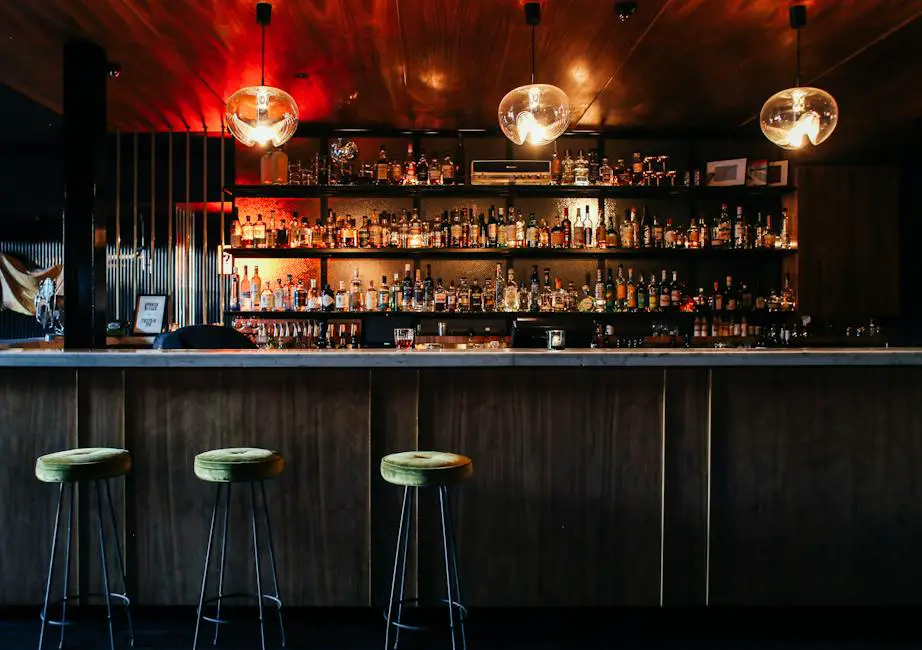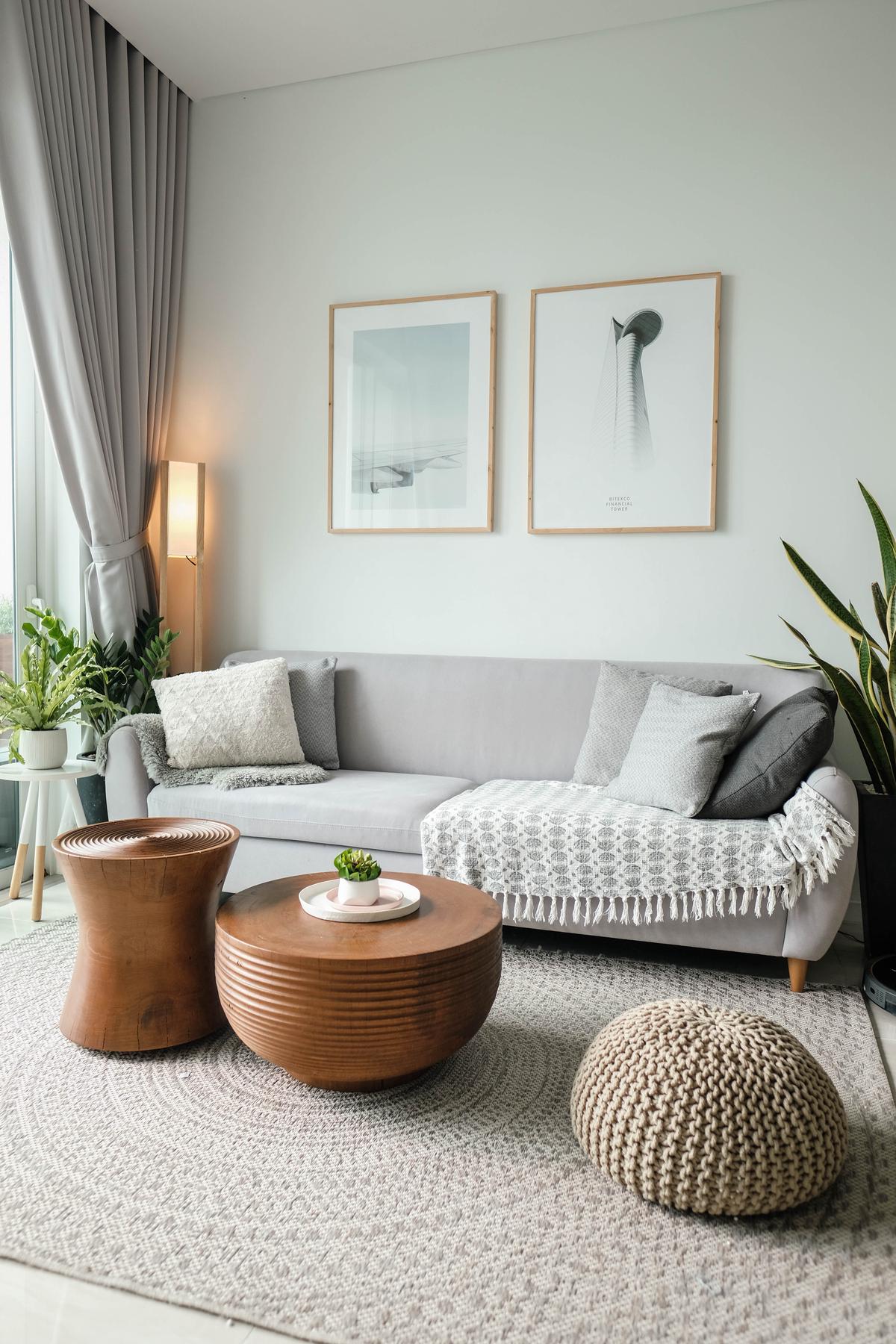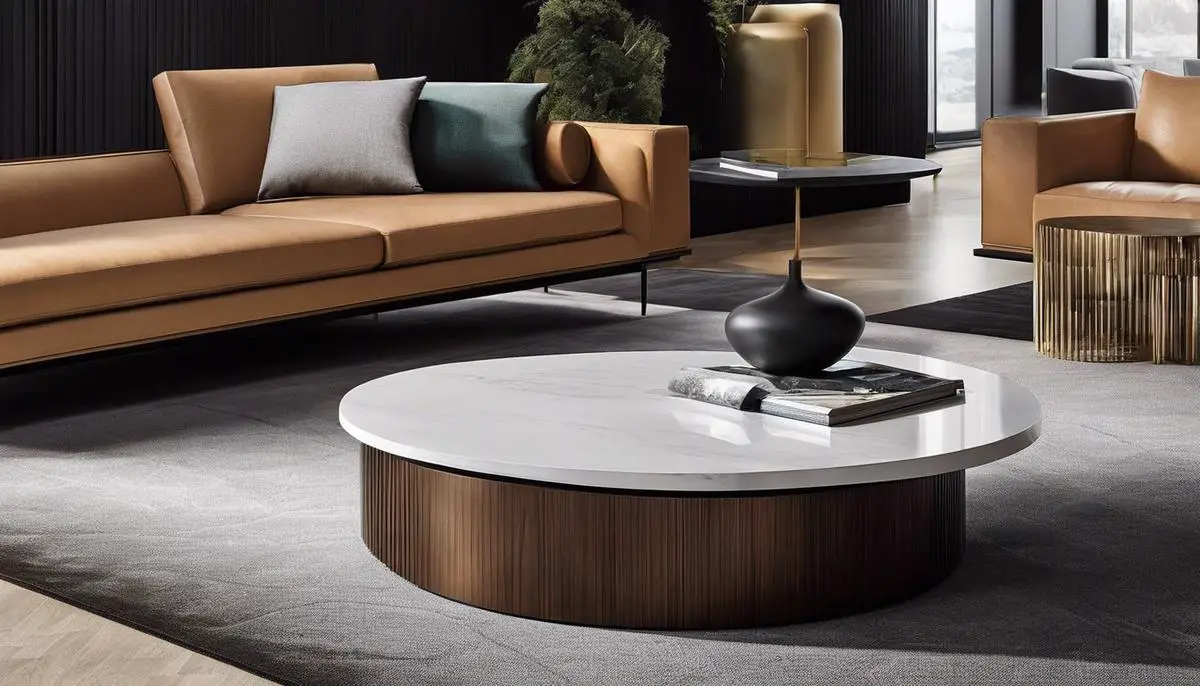When it comes to furnishing a living space, the selection of a central table can substantially influence both the aesthetics and functionality of the room. While often used interchangeably in casual conversation, cocktail tables and coffee tables champion distinct purposes and styles, each with its unique appeal. The design and aesthetic differences are evident in their individual dimensions, shape variations, and material compositions, all of which add a certain character to a home. Navigating the nuances between these two furniture pieces, this discourse will illuminate how each table can either complement or define the social and practical dynamics of a living area. Let’s embark on a journey to discover the essence of cocktail and coffee tables, and how they can be seamlessly integrated into your personal space, reflecting both your lifestyle and design preferences.
Table of Contents
Design and Aesthetic Differences
The Tale of Two Tables: Understanding Cocktail and Coffee Table Designs
When you’re browsing through furniture catalogs or meandering through your favorite home decor store, the vibrancy of various tables likely catches your eye. In the world of casual furnishing, two types often stand out: cocktail tables and coffee tables. At first glance, they might appear nearly identical – both are horizontal surfaces that tend to anchor our living spaces. But delve just a wee bit deeper and you’ll discover that their design aesthetics are as distinct as their origins and purposes.
Let’s start with cocktail tables. Stemming from the Prohibition Era’s speakeasies, cocktail tables were designed to facilitate standing. You’d lean in, martini in hand, setting it down between sips as you mingled. Generally, cocktail tables stand taller than their coffee table cousins – reaching a height of around 20 to 22 inches. They embody an elegance suitable for their name, with a sleek profile that often features longer legs. These tables aren’t just there to hold your drink; they’re a statement piece that signifies a kind of grown-up sophistication. Materials range from glossy, lacquered finishes to fine woodwork, reflecting the carefree opulence of cocktail hour. And size-wise, they’re a bit more compact – making them a fabulous choice for smaller spaces where you desire function without overwhelming the room.
Now, let’s mosey on over to the homely comfort of the coffee table. This living room staple has a more relaxed vibe, think of Saturday mornings lounging in pajamas with a warm cup in hand. In contrast to their cocktail counterparts, coffee tables tend to favor a lower profile, typically standing no more than 18 inches tall – the perfect height to access from the sofa. Design-wise, they often offer more in terms of functionality: think storage compartments, shelves, and sometimes even lift-tops.
Rustic, farmhouse, modern, or mid-century – there’s a coffee table design for every aesthetic. Their broad and sturdy surface is primed for the wear and tear of daily life, from supporting heavy art books to withstanding the occasional footrest. Materials vary widely, but there’s a common thread of durability and a design that encourages a more casual, inviting atmosphere.
Neither table’s allure is solely in its height or utility; it’s in the details. Cocktail tables might boast fluted legs and ornamental inlays, while a coffee table might feature raw, natural wood grain or a sleek, industrial metal frame. The choice between them isn’t just one of fitting furniture to a space; it’s about setting the tone.
Do we want the living room to encourage jovial conversation, a hint of formality that says, “This is a space for celebration”? Then opt for the cocktail table. Or is the goal to create a sanctuary of relaxation, a centerpiece that says “Kick back and stay a while”? In that case, a well-chosen coffee table is the way to go. Deciding between the two is more than an aesthetic choice; it’s a lifestyle choice.
In essence, while cocktail and coffee tables can sometimes be used interchangeably, understanding their differences in design and functionality can transform one’s living space – not only in how it looks but also in how it’s used. They may share a category, but they cater to moments as distinct as the morning brew and the evening toast.

Functional Purposes
Diving deeper into the world of cocktail and coffee tables, let’s explore the specific functional purposes these pieces serve in the context of modern living.
Cocktail Tables: Entertaining Essentials
A cocktail table isn’t merely a piece of furniture; it’s a stage for mingling and merriment. Positioned in a room where guests congregate, it acts as a central hub for social interactions. Typically standing taller than coffee tables, they allow guests to easily place or pick up their drinks, even in a standing position, which is crucial during a bustling gathering. Its height is also perfect for showcasing appetizers or hors d’oeuvres, inviting guests to gather round and enjoy.
Moreover, they’re indispensable during cocktail hour, providing a surface that’s at a comfortable height for those seated on barstools or standing nearby. In terms of function, these tables are often designed to withstand the occasional spill, with surfaces that are easy to wipe clean. The sleek construction not only enhances visual appeal but ensures the table doesn’t become a bulky obstacle in a room filled with guests.
Coffee Tables: The Heart of Daily Living
While cocktail tables are about the experience of entertaining, coffee tables are all about daily ease and accessibility. Positioned at a lower height, they are perfectly aligned with the typical sofa or lounge chair height, making them an ideal rest for remote controls, books, laptops, and, of course, your morning cup of joe or evening tea. This accessibility is particularly important in a living room setting, encouraging a relaxed posture and comfortable environment.
The functionality of coffee tables extends to storage, with many designs offering built-in drawers or shelves, aiding in clutter reduction without sacrificing style. One can easily store away magazines, coasters, and other miscellaneous items, keeping the tabletop clear for actual use.
Additionally, their sturdy construction often means these pieces can serve multiple purposes. They might act as a footrest after a long day or become a makeshift dining table for an impromptu TV dinner. Their lower profile contributes to an unobstructed view of the room or television, underscoring their role in day-to-day leisure and comfort.
Adapting to Lifestyles
Both cocktail and coffee tables emerge as essential elements of interior design, adjusting to specific lifestyles and events. Whether accentuating a formal reception area with a cocktail table’s elegance or creating a cozy nook for everyday use with a coffee table, these pieces offer more than a mere surface; they enhance the way spaces are used and enjoyed.
Lastly, it’s clear that while these two types of tables share some similarities, they are, in fact, crafted with distinct functions in mind. Cocktail tables set the stage for social engagements and lively evenings, whereas coffee tables anchor the day-to-day facets of domestic life, each playing a vital role in the narrative of a well-furnished, well-loved home.

Photo by minhphamdesign on Unsplash
Choosing the Right Table for Your Space
Delving into the world of living room furnishings, it’s impossible to overlook the pivotal role that both cocktail and coffee tables play in the very essence of home entertaining and daily living. As one observes the nuances of functionality and form, the choice between the two tables depends as much on the nature of a living space as it does on the needs and preferences of its inhabitants.
In a social setting, cocktail tables stand out as the sophisticated anchor for convivial gatherings. Their versatility is unmatched when it comes to hosting; these tables are not merely surfaces but social hubs designed to facilitate interaction and enjoyment. The cocktail table’s optimal height is particularly instrumental in encouraging guests to gather around for appetizers and drinks, with a stature that’s carefully balanced to accommodate a standing group without being imposing.
The features of a cocktail table are notably intentional. Many boast surfaces that are resilient and easy to clean, prepared to handle an occasional spill from a lively conversation or an enthusiastic toast. Considering cocktail hour, such surfaces become a stage for elaborate drinkware and decanters, showcasing the host’s attention to the ritual of evening entertainment.
On the other side of the spectrum, coffee tables carry unparalleled significance in daily living. They serve as the central piece around which the daily dance of family life revolves. With their lower profile, coffee tables effortlessly bridge the space between seating furniture, enabling easy access for a reach to a remote, a magazine, or a cup of aromatic coffee. This accessible silhouette ensures that all seated in the surrounding couches and chairs feel included and connected.
Storage is another indispensable feature of coffee tables. Nowadays, many coffee tables integrate drawers, shelves, and even hidden compartments designed to keep the living area free from the clutter of everyday life. From storing remote controls and gaming devices to organizing magazines and books, these tables facilitate a tidy and welcoming atmosphere.
Beyond their conventional role, coffee tables have a penchant for versatility. Whether serving as a makeshift dining area for an impromptu pizza night, a space for board games during family time, or simply as a footrest after a long day, their adaptability is a testament to the varied rhythms of daily home life.
As inhabitants of spaces fluid in their nature, cocktail and coffee tables are thus not rigid in their roles. Adaptability is key, and both types of tables can be chosen and styled to fit specific lifestyles and events. A carefully selected cocktail table can perform dutifully for morning espressos if space constraints demand such flexibility, just as a robust coffee table can serve the central role in casual cocktails if adorned and approached with creativity.
Last but not least, the distinct functions and roles of cocktail and coffee tables in interior design cannot be overstated. Selecting the right table is integral to the overall harmony and functionality of home furnishing. They’re not mere objects in a room; they’re the vessels for memories, the platforms for connection, and quite often, the heart of the home itself. Whether one is choosing a cocktail or coffee table, it’s essential to envision not only the practical aspects but also the spirit they will infuse into daily life and festive occasions alike.

The journey to find the perfect centerpiece for your living space can be both an adventure and a design challenge. Whether you find your match in the grandeur of a cocktail table or the cozy embrace of a coffee table, the right selection can transform your room into a harmonious haven that resonates with your personal aesthetic and meets your lifestyle needs. Armed with insights into design subtleties, functional requisites, and harmonious selection strategies, you’re now equipped to choose a table that not only anchors your living space but also becomes a testament to your taste and way of life. May your choice bring a new dimension to your gatherings, comfort to your daily rituals, and an enduring charm to your home’s ambiance.

After sitting in a back breaking office chair for hours every day at his job, William Burch got the idea to start the Recliners Hunt website. William is focused on ergonomic chair design – as it is more important than ever today since we are spending more and more time sitting at our computers.


